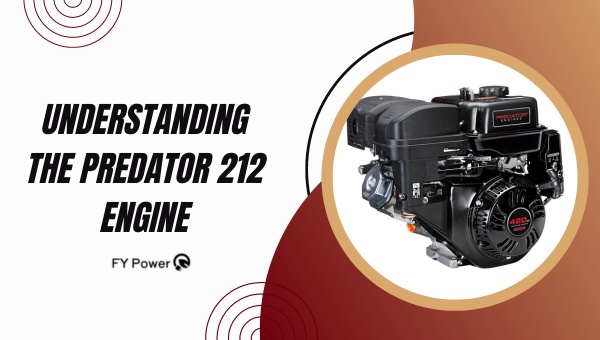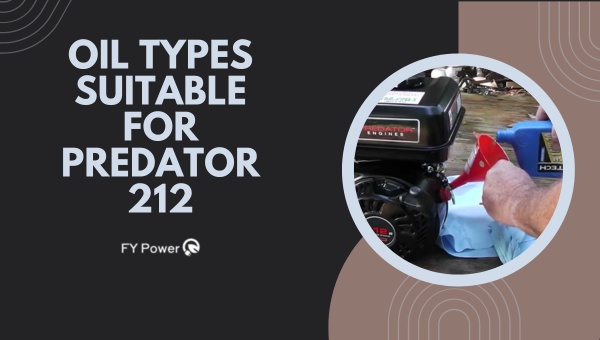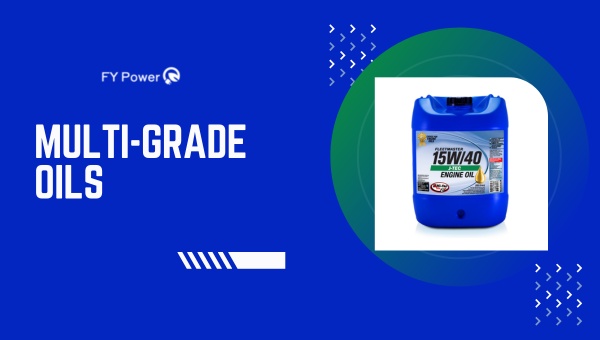When it comes to maintaining the performance and longevity of your Predator 212 engine, one of the key factors that should never be overlooked is choosing the right oil type and ensuring timely changes. As engines work hard to power your equipment, keeping up with regular oil changes at recommended intervals plays a crucial role in preventing wear, tear, and potential damage.
This guide will provide a detailed understanding of the Predator 212 oil type, capacity, and change interval, as well as maintenance tips. By following this guide, you can keep your Predator 212 engine running at peak performance for years to come.
Understanding the Predator 212 Engine
Understanding the Predator 212 engine is essential before diving into the specifics of oil types, capacities, and change intervals. This particular engine is popular among go-kart enthusiasts, mini-bike riders, and those needing durable equipment for various outdoor tasks. Produced by Harbor Freight Tools, this engine sports a 6.5 horsepower rating and a 212 cc displacement.

One impressive feature of the Predator 212 engine is its affordability. It offers a lot of power and durability for its price, making it a go-to option for those looking for a cost-effective alternative to more expensive engines. Additionally, its simple design means that it’s also easy to modify and maintain.
Here are some key specifications of the Predator 212 engine:
- Displacement: 212 cc
- Horsepower: 6.5 HP
- Fuel Tank Capacity: 0.95 gallons
- Oil Capacity: 20 oz.
- Cooling: Air-cooled
- Shaft Size: 3/4″ diameter, 2.43″ length
- Start Type: Recoil
The engine features an overhead valve design (OHV), ensuring efficient operation and improved performance while keeping the engine compact. Its maximum torque reaches up to 9.7 ft-lbs at 2,500 RPM.
When it comes to fuel type, the Predator 212 engine runs on unleaded gasoline with an octane rating of 87 or higher. Using high-quality fuel is important, as it can extend the life of your engine and increase overall performance. To keep your engine safe and reliable, it’s crucial to use the correct oil type and follow the recommended maintenance schedule.
Moreover, the Predator 212 engine is known for its versatility. It can be used in various applications, such as:
- Go-karts
- Mini bikes
- Tillers
- Pressure washers
- Small wood chippers
- Log splitters
- Generators
Now that you have a better understanding of the Predator 212 engine, you can make more informed decisions about the type of oil to use, the appropriate capacity, and the ideal change interval. Stay tuned as I delve deeper into these topics in the following sections.
Also Read: Who Makes Predator Generators? Exploring Their Origins
Predator 212 Oil Types

When choosing the right oil for your Predator 212 engine, it’s important to be aware of different factors, including temperature and viscosity requirements. I’ll walk you through some suitable oil types for this engine in this section.
Multi-grade Oils

Multi-grade oils, such as 10W-30 or 10W-40, provide a good range of protection across various temperatures. They’re designed to perform in hot and cold climates, making them suitable for most Predator 212 applications. Here’s a table that demonstrates the various suitable multi-grade oils:
| Oil Type | Temperature Range |
|---|---|
| 10W-30 | -4°F to 86°F (-20°C to 30°C) |
| 10W-40 | 14°F to 104°F (-10°C to 40°C) |
Single-grade Oils
Single-grade oils can be more cost-effective if you’re operating your Predator 212 engine in a consistent climate. However, it’s essential to choose the correct viscosity for your environment. Some popular single-grade oils include SAE 30 and SAE 40:
- SAE 30: Works well in warmer climates, with temperatures ranging from 50°F to 104°F (10°C to 40°C).
- SAE 40: Recommended for hotter temperatures, generally above 77°F (25°C).
Keep in mind that single-grade oils don’t offer the same flexibility as multi-grade options, so they’re less versatile when dealing with temperature fluctuations.
Synthetic Oils
Synthetic oils, such as 5W-30 or 5W-40, can offer improved performance, increased mileage, and better protection for your engine. They’re created through a chemical process, allowing for more consistent performance in extreme temperatures than conventional oils. Some advantages of synthetic oils include:
- Reduced sludge formation
- Quicker oil flow at startup
- Improved fuel economy
It’s worth noting that synthetic oils can be more expensive than conventional options, so they might not be the best choice if you’re looking to minimize costs.
Making Your Decision
To choose the right oil for your Predator 212 engine, consider the typical operating temperature and your budget first. A multi-grade oil is likely your best bet if you need a versatile option that performs well across various temperatures. For consistent climates, single-grade oils provide a cost-effective option. Finally, synthetic oils can be a worthwhile investment for those looking for improved performance and protection.
Always consult your engine’s owner manual for specific oil recommendations, change intervals, and capacity before making your final decision. This will ensure the best performance and longevity of your Predator 212 engine.
Also Read: Best Guide To Predator Engines Oil Type And Capacity
Determining Predator 212 Oil Capacity
When it comes to Predator 212 engines, it’s essential to know the proper oil capacity to keep your engine running smoothly. In this section, I’ll break down the key factors in figuring out the right amount of oil for your Predator 212 engine.
To begin, Predator 212 engines typically have an oil capacity of 20 ounces (approximately 0.59 liters). However, it’s always best to consult the owner’s manual that came with your specific engine model to confirm the precise oil capacity. Manufacturers may slightly alter the capacity in different models or revisions, so double-checking is crucial.
It’s worth noting that using the correct oil type plays a significant role in your engine’s performance. For Predator 212 engines, the recommended oil type is SAE 10W-30. This particular oil type provides optimal protection and performance across a wide range of temperatures.
For further clarification, here’s a breakdown of the oil capacity and type information for Predator 212 engines:
| Oil Capacity | Oil Type |
|---|---|
| 20 oz (0.59 L) | SAE 10W-30 |
Ideal Change Intervals for Top Performance
Knowing the proper oil change interval for your Predator 212 engine will keep it running smoothly and at top performance. My experience and research reveal that the change interval really depends on numerous factors, including the type of oil you’re using, engine usage, and your desired level of maintenance.
Here are some guidelines to follow for achieving peak performance:
- Break-in Period: Just like any other engine, the Predator 212 also requires a break-in period. After the initial 5 hours or so of runtime, it’s best to change the oil.
- Regular Use: An oil change every 20 to 50 operational hours is recommended for standard engine usage. Be attentive to the engine’s performance and the appearance of the oil over time.
- Intensive Use: If you’re putting your Predator 212 engine through a rigorous test, it’s wise to change the oil more frequently. Aim for an oil change after every 10 to 20 hours of operation for optimal results.
To give you a better perspective, here’s a markdown table of the recommended oil change intervals:
| Use Type | Interval |
|---|---|
| Break-in Period | First 5 hours |
| Regular Use | 20-50 hours |
| Intensive Use | 10-20 hours |
It’s important to note that these are general recommendations and can vary based on the type of oil you use in your engine. Here’s a quick rundown of some popular oil types for the Predator 212:
- Synthetic Oil: Known for its superior performance and extended intervals, synthetic oil provides better protection for your engine. You can easily go up to 50 hours on this oil type.
- Conventional Oil: Being more prevalent and affordable, conventional oil serves as a standard choice. However, with this oil type, you’d be better off changing it every 20 to 30 hours.
Regardless of the oil type, always be sure to check the oil level before each operation. It’s a good habit to have and will contribute to the engine’s overall health. Remember, it’s better to change the oil more frequently than to risk damaging your engine due to contaminated oil.
Remember, properly taking care of your Predator 212 engine ensures long-lasting and reliable performance. By understanding and following the guidelines for determining oil capacity, type, and change intervals, you’re setting yourself up for success with your engine.
Also Read: A Guide To All Predator Generators Weight And Dimensions
Step-by-Step Guide to Changing Predator 212 Oil
I know that changing the oil in your Predator 212 engine is essential for maintaining its performance and longevity. That’s why I’ve put together this handy step-by-step guide to make the process as smooth as possible.
Before we begin, gather these items:
- Clean rags or paper towels
- Socket wrench with appropriate socket size
- Oil drain pan
- A funnel
- Fresh oil that matches the recommended oil type
Here’s how to change the oil in your Predator 212 engine:
- Allow the engine to cool down. It’s important to let your engine cool down for at least 30 minutes before starting the oil change process. This helps avoid burns and ensures the oil has settled down in the engine.
- Locate the oil drain plug. Underneath your Predator 212 engine, you’ll find the oil drain plug. This is typically either on the bottom or side of the engine.
- Place the oil drain pan. Put the oil drain pan directly beneath the drain plug to catch the used oil as it drains from the engine.
- Remove the oil drain plug. Use the socket wrench to loosen and remove the oil drain plug. Be careful as you take it out, as the oil may start to drain quickly.
- Drain the oil. Allow the old oil to drain completely into the oil drain pan. This may take a few minutes.
- Clean the drain plug. While the oil is draining, take this opportunity to clean the drain plug with a rag or paper towel.
- Reinstall the drain plug. Once the oil has completely drained, reinstall the drain plug and tighten it securely using the socket wrench.
- Locate the oil fill cap. You’ll find the oil fill cap on the top of your Predator 212 engine. It’s often marked with an oil can symbol or the word “oil.”
- Remove the oil fill cap. Unscrew and remove the oil fill cap and set it aside.
- Add fresh oil. Using the recommended oil type, slowly pour new oil into the engine through the oil fill hole, using a funnel to avoid spills. Predator 212 engines typically have an oil capacity of 20 ounces. Be sure not to overfill the engine.
- Replace the oil fill cap. Replace the oil fill cap and tighten it securely once you’ve added the appropriate amount of fresh oil.
- Clean up and dispose of the used oil. Carefully transfer the used oil from the drain pan into a sealable container. Be sure to dispose of it properly, following local regulations or taking it to a designated recycling facility.
With this simple and easy-to-follow guide to changing the oil in your Predator 212 engine. Regular maintenance is key to ensuring your engine’s performance remains top-notch, so keep this guide handy for future reference.
Also Read: All Predator Generators Spark Plug Gap and Socket Size Guide
Troubleshooting Common Oil-Related Issues
Regarding the Predator 212 engine, ensuring proper maintenance of the oil system helps maintain top-notch performance. In this section, I’ll address a few common oil-related issues, their possible causes, and potential solutions.
One issue that may occur is oil leaking. Possible causes for this problem include:
- Loose bolts on the side cover or oil drain plug
- Damaged or worn-out gaskets
To fix these issues, try tightening the bolts and replacing the gaskets with new ones if needed.
Low oil pressure is another commonly encountered problem. It could be caused by:
- Insufficient oil level
- Incorrect oil type
- Clogged oil filter or strainer
- Worn-out oil pump
To tackle this problem, ensure the oil level is within the recommended range, use the right oil type (SAE 30) for the Predator 212, and clean or replace the filter and strainer as needed. If the oil pump is worn out, it’s best to replace it.
Next, experiencing excessive oil consumption can be troubling as well. Here are a few possible reasons:
- Overfilling the oil tank
- Inaccurate oil level reading due to an uneven surface
- Worn piston rings or valve seals
To address these issues, double-check the oil level and refill only as needed, making sure the engine is on a level surface when measuring. In the case of worn parts, consult with an expert to replace the necessary components.
Lastly, if you notice bluish or black smoke from the exhaust, it might be another sign of oil-related issues. Common causes include:
- Excess oil in the combustion chamber
- Worn piston rings or valve seals
- Crankcase ventilation system issues
Initially, ensure the oil level is correct and avoid overfilling. Replace worn piston rings or valve seals if necessary, and check the crankcase ventilation system.
Regular oil maintenance is essential for your Predator 212’s performance. Addressing oil-related problems promptly will help prevent more serious issues and keep your engine running smoothly. Don’t hesitate to consult with an expert if you’re unsure about any of the above troubleshooting steps.
Also Read: Guide To Predator Generator Fuel Types, Capacity & Run Time
Maintenance Tips for Extended Engine Life
Regular maintenance of your Predator 212 engine is essential in ensuring it performs at its best and enjoys a prolonged lifespan. In this section, I’ll share some valuable maintenance tips to keep your engine running smoothly.
1. Regularly check and change the oil
The importance of engine oil can’t be overstated. Using the recommended 20W-50 oil is vital, as it ensures that the engine runs smoothly and efficiently and helps prevent wear and tear. Always check the oil level and make sure to change it according to the manufacturer’s guidelines – commonly every 20 hours or after 100 miles for the break-in period and then after every 100 hours or 500 miles of use.
2. Keep the air filter clean
A clean air filter is key to keeping dust and debris out of your engine. Regularly inspect and clean the air filter, paying close attention to the foam pre-filter. Consider replacing the air filter altogether if you notice excessive dirt or damage.
3. Inspect and clean the fuel system
Maintaining optimal engine performance is crucial to keep the fuel system clean. Check the fuel tank, fuel lines, and carburetor for any signs of dirt or contamination. Consider using a fuel stabilizer to protect the engine and keep the fuel fresh during prolonged storage periods.
4. Adjust the valves
Performing a valve adjustment in accordance with the manufacturer’s guidelines is essential for maintaining proper engine performance. This will ensure the correct valve clearance and prevent potential damage from occurring. Typically, valve adjustments should be done every 100 hours of engine use.
5. Regularly inspect the spark plug
Inspect the spark plug regularly for wear or damage and replace it if necessary. Keep in mind that a poorly functioning spark plug can lead to inefficient engine performance and increased fuel consumption.
6. Keep engine and surrounding areas clean
An accumulation of dirt and debris around the engine can lead to overheating and other issues. Make sure to clean the engine area regularly, cooling fins, and muffler for optimal performance.
Some additional maintenance tips include:
- Lubricating the choke and throttle linkage
- Inspecting the recoil starter for wear
- Checking the engine mounting bolts for tightness
By following these maintenance tips, you’ll ensure that your Predator 212 engine remains in excellent condition, providing a reliable and efficient performance for years to come.
Also Read: Predator 2000 Generator Oil Type, Capacity & Change Interval
Conclusion
To wrap it up, knowing the correct oil type, capacity, and change interval for the Predator 212 engine is crucial for optimal performance and longevity. This guide provided a comprehensive one-stop reference for effectively operating and maintaining the engine. Let’s go over the key points covered:
- Oil type: Stick with good-quality SAE 10W-30 or SAE 30 synthetic oil for ambient temperatures above 32°F (0°C). In colder conditions, it’s better to use SAE 5W-30 synthetic oil.
- Oil capacity: The Predator 212 has a capacity of 20 fluid ounces (0.59 liters) of oil for proper lubrication.
- Change interval: Regularly check and change the oil for the first 5 hours of engine use, then every 20 hours of use.
I hope I’ve made it easy for you to navigate the world of the Predator 212 engine. By following these guidelines, you will surely have a smooth-operating engine with a long and trouble-free lifespan. Happy riding!

